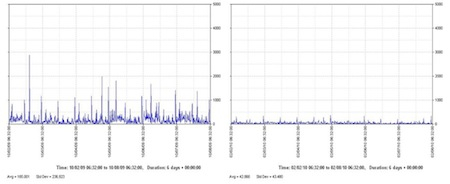When a major US medical device manufacturer decided to replace peel-off mats with polymeric floor coverings, it achieved a significant reduction in airborne counts and costs. Dycem explains how
Controlling microbial contamination is essential to medical device performance and reliability. As the complexity of device design increases, so does the process of assuring that microbial contamination is controlled during manufacturing. This control is essential to achieve the appropriate surface quality, optimal functionality and maintain sterility of the devices. Cleanroom equipment that reduces contamination plays an essential role in this process.
Contaminants can be generated by people, process, facilities and equipment and must be continually controlled and removed from the air. High levels of air-borne contamination could lead to microbial corruption of cleanroom surfaces, which in turn potentially contaminates and poses a threat to product processes; the consequences are lower product yields, raised costs and decreased profits.
Control of airborne contamination can be achieved through an integrated contamination control process that includes an effective flooring system. Some 80% of contamination is believed to enter the cleanroom at or near floor level. If this contamination is not captured it can rise to a critical airborne height and enter process areas through the vortices created by moving personnel and wheeled traffic.
A major US medical device manufacturer operating in Hybrid Manufacturing areas recently evaluated the use of polymeric floor coverings versus peel-off mats.
Various consumables are used in the facility’s gowning room, including bouffants, face masks, garments, ESD shoes and gloves. Blue peel-off mats were used to capture dirt from the operatives’ street shoes as they entered the gowning room. Building No.8, where tests were conducted, was spending US$24,000 per year on peel-off mats and disposing of around one ton (2028lbs) of used plastic peel-off mat sheets per year.
A leading polymeric floor covering was identified as a potential alternative to peel-off mats. A key feature of the polymeric floor covering is its ability to embed particulate within its cellular structure, rather than to bind it with surface adhesive, as is the case with the peel-off mat. The polymeric flooring is cleaned with a damp mop and detergent and then dried by using a squeegee.
The lifetime for the polymeric flooring material is 3–4 years. During that period building No.8 would spend at least $72,000 on peel-off mats.
The benefits of the polymeric flooring material were expected to be:
- Fewer particles in the gowning room
- Reduced product reject rates
- Reduced expense
- A greener solution
- Lower cleaning costs
A project plan was developed and presented to the Hybrid Manufacturing management. The financial feasibility for introducing several areas of polymeric flooring was analysed. Dycem believed the total spend on the new flooring would represent the equivalent of 20 months’ worth of blue peel-off mats that not only covered a much smaller surface area but also provided less performance. A financial benefit was then forecast, based on the longer life-span of polymeric floor coverings.
Cleaning costs would be reduced due to no adhesive carryover into the critical production areas from peel-off mats, and there would be fewer particles redistributed back into the atmosphere during the rip-up process of peel-off mats.
The management of Hybrid Manufacturing approved the project plan. To measure the performance, airborne particle counters were added to the gowning room. Particle data measurements were collected over a 12-week period while using the blue peel-off mats. The polymeric flooring material was installed after the 12-week period and particle data measurements were taken over a further 12 weeks. The results from one week of the testing are shown in the graphs in Fig 3.

Fig 3: The graph, right, shows airborne particle counts in Building No. 8 gowning room when the blue peel-off mats were in place. The spikes in the graph reflect when the tacky mats were being peeled. The average airborne count during this week was 185 for 0.5µm and larger particles per cubic foot of air. The graph on the left shows airborne particle counts in the same room after the polymeric floor covering was in place. The average airborne count during this week was 43 for 0.5µm and larger particles per cubic foot of air
Particle data
Airborne particles in the gowning room were reduced by 75% as a result of using polymeric floor coverings. Particle shedding levels were also reduced because no peeling of mats was taking place.
Cost savings were evident due to the 3–4 year life-span of the polymeric floor coverings. It was calculated that over this period, a saving of $80,000 could be made over the purchasing of peel-off mats. The custodians of the area reported a time saving of two hours per day due to not having to peel and dispose of the peel-off mats.
The polymeric flooring also provided a more environmentally friendly solution, as no peeling of mats is required and, therefore, approximately five tonnes of plastic will not, be going into landfill over the next five years.
Given the level of particle reduction and cost savings achieved, Dycem recommends that any facility operating in the life sciences field or food manufacturing should evaluate the use of polymeric floor coverings.





